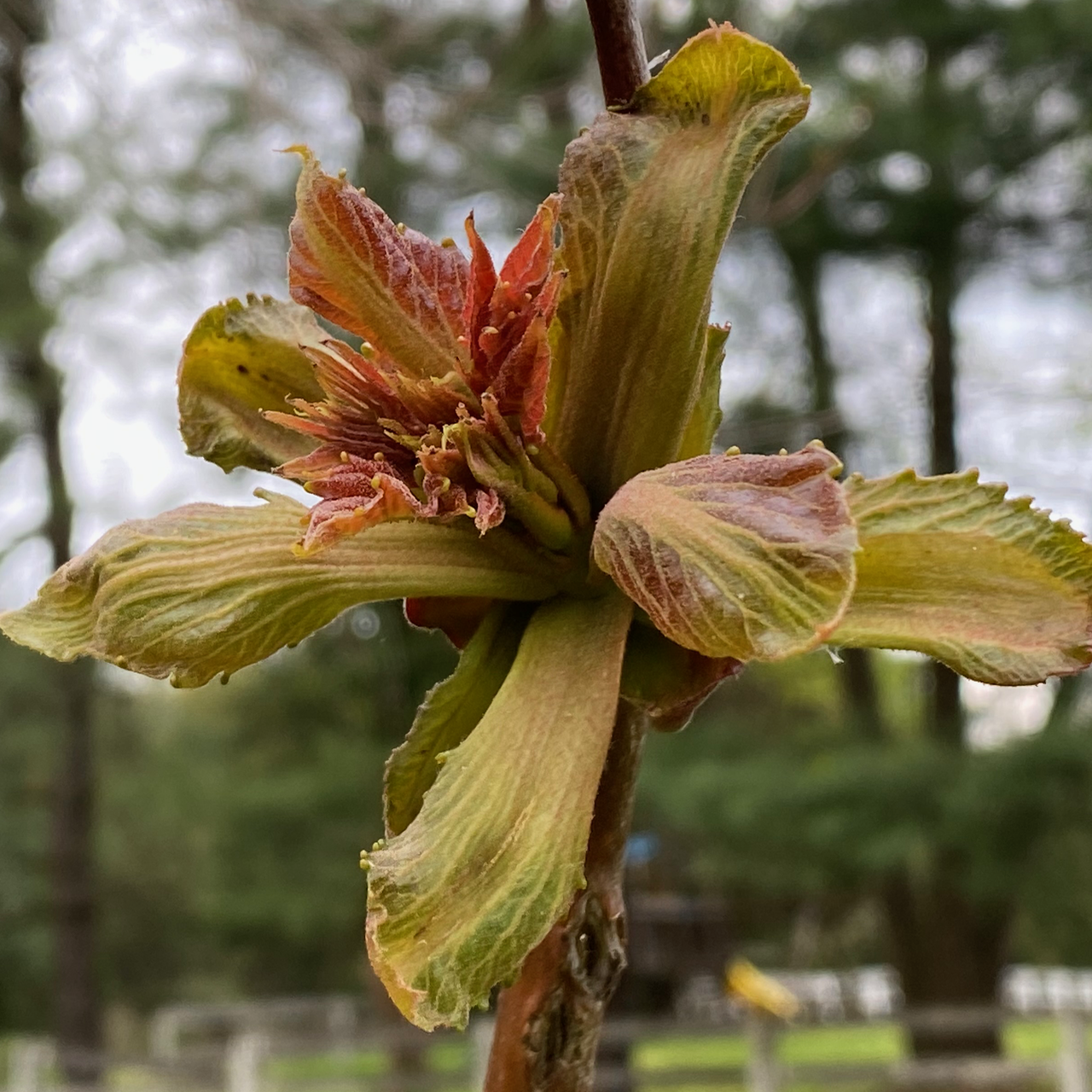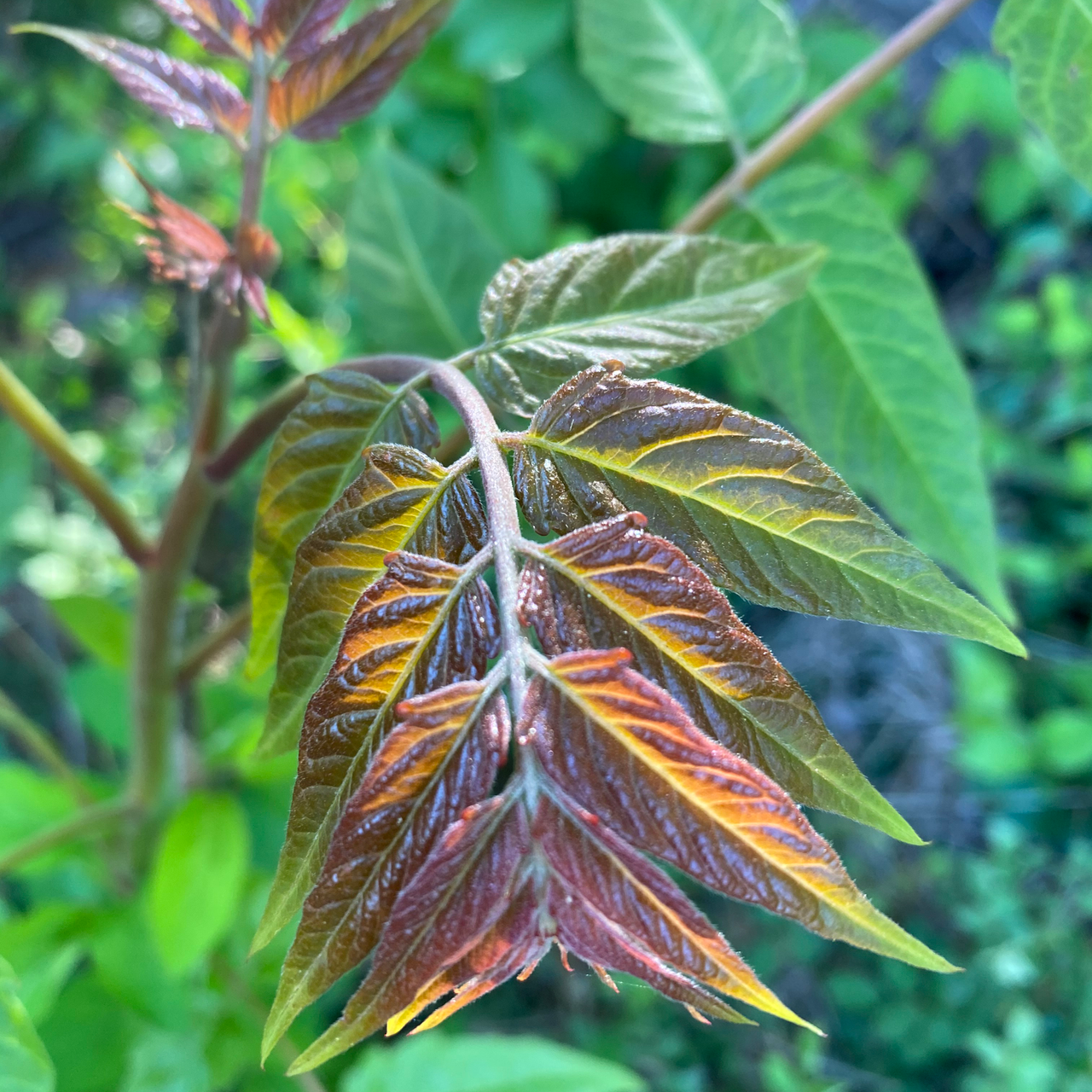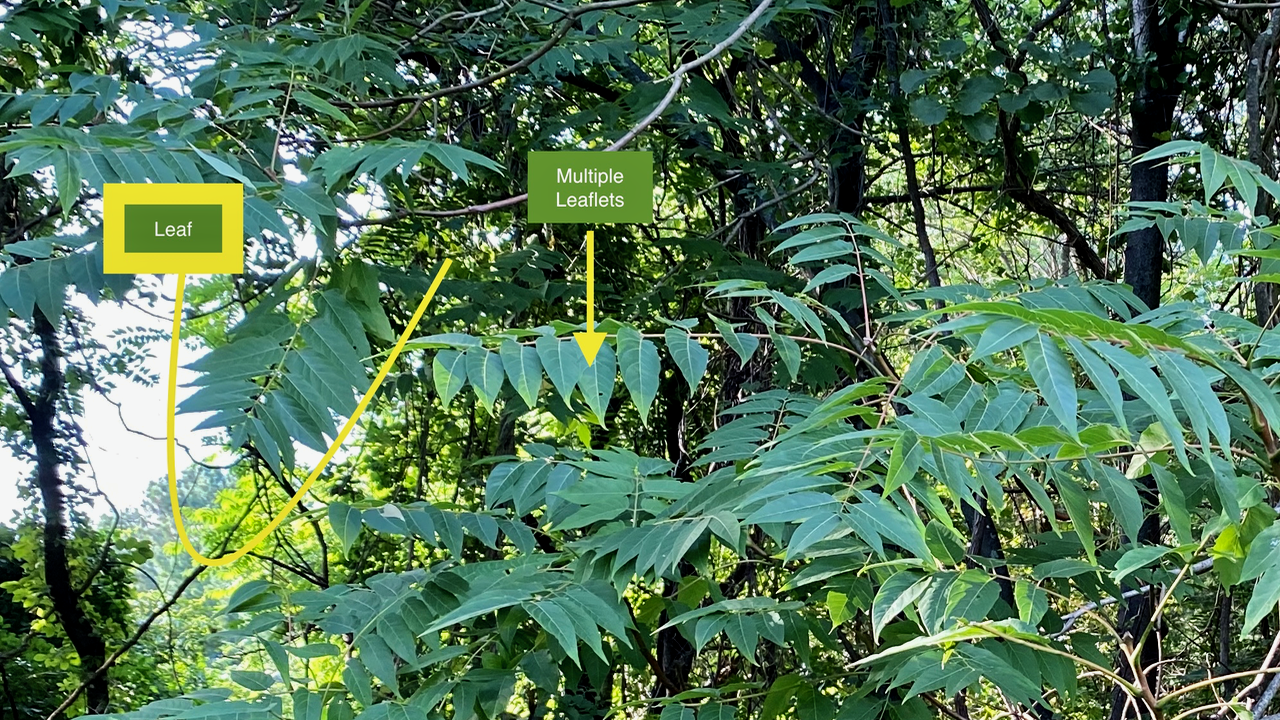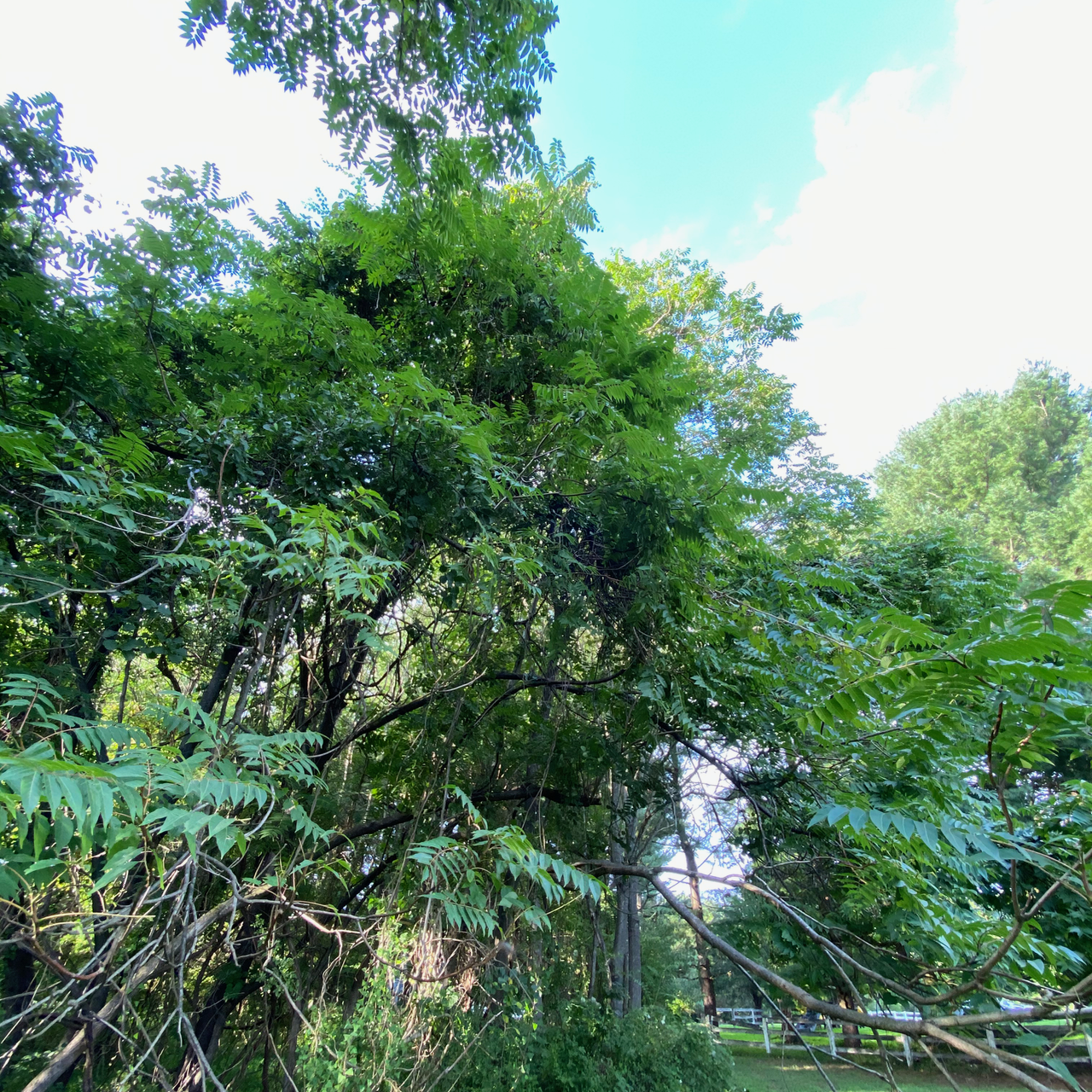More natural foliage decimated by another invasive species. There is nothing heavenly about the Tree of Heaven or technically Ailanthus altissima. Earlier this spring, the emergence of the foliage fascinated me. It was so beautiful. At that time, I had not identified the tree. I should have known it is an invasive species. It is surrounded by Japanese Honeysuckle and Autumn Olive. Many invasive species take advantage of previously disturbed areas. This one does too.
Tree of Heaven
Introduction to the United States
The Tree of Heaven is native to China. It’s introduction to the United States was complicated. It originally arrived in Philadelphia in 1784. Supposedly we needed a fast growing exotic shade tree. The tree is visually interesting and unique. That is what caught my attention. Consequently, its popularity grew quickly. It was re-introduced 36 years later in New York. Planting and use grew exponentially. In the early 1800s it arrived again. Chinese gold rush workers brought it with them to California. They used it for medicinal purposes as well as a reminder of their native land.
The USDA distributed its seeds in the early 1900s. The concept of invasive species was relatively unknown. Knowledge of ecosystems and plants was in its infancy. We eventually learned that the introduction of non-native species is detrimental. Unfortunately, it was too late.
Tree of Heaven - Pinnately Compound Leaves & Leaflets
The Tree of Heaven is easily to identify. It has distinct leaves. They are large and pinnately compound. The leaf stem extends from the main branch. A leaf is a series of leaflets. Leaves are 1-4 feet in length with 10- 40 leaflets. Leaflets are lance shaped and attached opposite each other. They have smooth edges. Leaf edges are not smooth on most other trees with these types of leaves.
Invasive Species - Ailanthus altissima
Most invasive species have similar growing characteristics. This one is no different. The Ailanthus altissima grows almost anywhere. Unfortunately, this tree rapidly grows to heights of 80 to 100 feet therefore it easily shades out other plants. It also has an extensive root system. Finally, it secretes allelopathic chemical in its leaves, roots, and bark. Crushing the leaves produces a noxious smell. Secretions from the roots are toxic to other plants. To sum it up, it is quite prolific in its ability to crowd out other plants.
References
First, the Ecological Landscape Alliance invasive species plant fact sheet is an excellent resource for the history of this invasive species and invasive species in general.
Second, Penn State Extension is a great resource for this invasive species and others.
Third, the USDA National Invasive Species Center is always a great resource. This article links to others.
Finally, the Nature Conservancy wrote a nice article.



